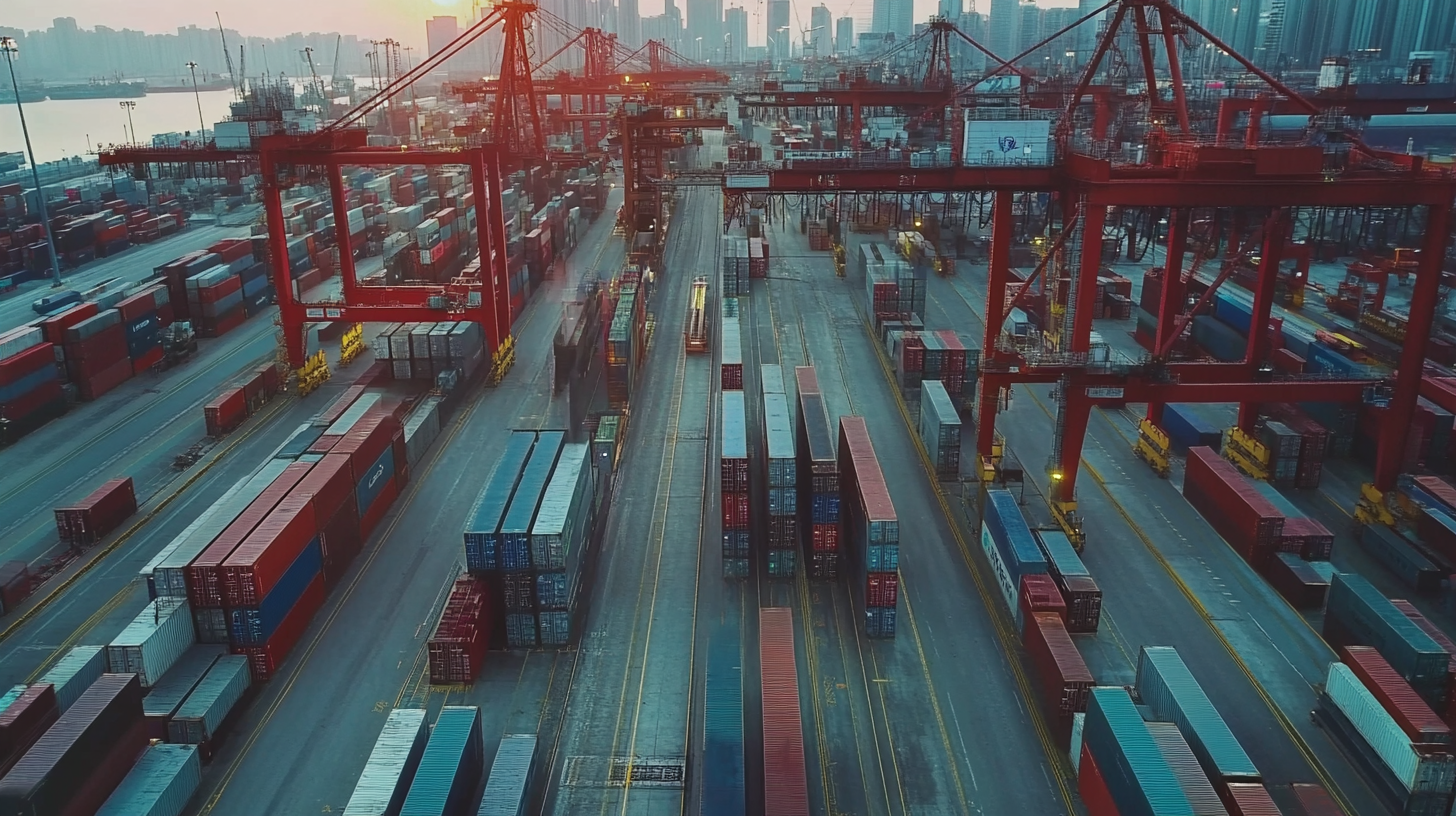© 2025 Messer Cutting Systems, Inc.
In the ever-evolving landscape of global trade, tariff challenges have become a significant concern, particularly for manufacturers navigating the complexities of U.S.-China trade relations. Despite the imposing tariffs, Chinese manufacturing has demonstrated remarkable resilience and growth, largely due to technological advancements such as the adoption of Fiber Lasers. These cutting-edge tools not only enhance production efficiency but also enable manufacturers to maintain a competitive edge in quality and output. As the industry adapts to shifting market demands and regulatory pressures, Fiber Lasers emerge as a pivotal force driving innovation and growth. This blog explores how the integration of Fiber Laser technology is empowering Chinese manufacturers to not only weather tariff storms but to thrive in an increasingly challenging environment.

The impact of tariff policies on Chinese manufacturing growth rates has been profound and multifaceted. As nations impose tariffs on each other's goods, the cost structures of manufacturing operations are dramatically altered, creating an environment where efficiency and adaptability become critical. For the Chinese manufacturing sector, which heavily relies on both domestic production and international exports, these tariffs can lead to increased costs for raw materials and components sourced from overseas. Consequently, manufacturers are compelled to either absorb these costs or pass them on to consumers, affecting their competitive edge in global markets.
In this context, advanced technologies, particularly high-performance fiber lasers, offer a pathway for mitigating tariff-related challenges. By incorporating these lasers into their production processes, Chinese manufacturers can enhance precision and efficiency, ultimately reducing waste and operational costs. This technological shift not only aids in sustaining growth amidst fluctuating tariff regimes but also positions manufacturers to seize opportunities in high-value markets. As Chinese manufacturing evolves to navigate these complexities, investment in innovative solutions like fiber lasers will be crucial for maintaining competitiveness and driving growth.
In today's competitive manufacturing landscape, fiber lasers are proving to be invaluable assets for companies seeking to enhance production efficiency, especially in the face of increasing tariff challenges. With their precision and versatility, fiber lasers enable manufacturers to streamline their operations, reduce waste, and ultimately lower production costs. These benefits are particularly crucial for businesses navigating the complexities of tariffs that can elevate costs and disrupt supply chains.
Moreover, the integration of fiber lasers into manufacturing processes allows for faster production times and more intricate designs, which are essential for meeting the evolving demands of the market. As manufacturers in China adapt to the pressures of global trade dynamics, fiber lasers serve not only as tools for efficiency but also as catalysts for innovation. They empower companies to remain competitive despite external economic pressures, positioning themselves for sustainable growth in an increasingly challenging environment. This technological advancement can be a game-changer, transforming how manufacturers respond to tariff-related challenges while advancing their operational capabilities.

In the evolving landscape of global manufacturing, Chinese industries are demonstrating remarkable resilience despite the challenges posed by tariffs. The recent data showcasing an uptick in manufacturing activity illustrates this perseverance. Many private surveys indicated that China's factories are adapting and even thriving, suggesting that businesses are employing innovative strategies to mitigate the impact of trade restrictions. This adaptability is pivotal in maintaining growth and stability within the sector.
Moreover, China's economic framework appears to be better equipped to handle the ongoing trade tensions compared to its counterparts. Analysts note that while external pressures from tariffs might strain certain sectors, the overall resilience exhibited by Chinese manufacturing underpins its potential for long-term success. With a keen focus on technology and innovation, manufacturers are navigating these challenging waters, ensuring that they not only survive but also position themselves for future opportunities in an increasingly complex global economy.
As global trade tensions and tariff challenges shape the manufacturing landscape, data-driven analysis reveals a significant trend: the adoption of fiber lasers in Chinese manufacturing is closely linked to export growth. These advanced laser technologies, known for their precision and efficiency, are being increasingly utilized across various industries, from automotive to electronics. The ability to produce high-quality products at a lower cost allows manufacturers to remain competitive in international markets despite rising trade barriers.
Recent studies indicate that regions in China that have embraced fiber laser technology have seen notable increases in their export volumes. This is not just a matter of keeping pace; the integration of fiber lasers enables manufacturers to innovate their processes, reduce waste, and enhance product quality. As manufacturers optimize their operations, they not only mitigate the impacts of tariffs but also position themselves as leaders in the global marketplace. The data suggests that investing in fiber laser technology is not merely a trend but a strategic move for sustaining growth in the face of economic challenges.
In today's competitive global market, Chinese manufacturers face multiple challenges, including rising tariffs and an evolving landscape of international trade. To stay ahead, it is essential for these companies to adopt innovative strategies that leverage advanced technologies like fiber lasers. By integrating high-precision fiber laser systems into their production processes, manufacturers can enhance efficiency, reduce costs, and improve product quality, all of which are vital for maintaining a competitive edge.
Furthermore, collaboration and adaptability play crucial roles in navigating the complexities of the global market. Establishing partnerships with technology providers can facilitate access to cutting-edge innovations that streamline operations. Manufacturers must also remain agile, quickly responding to shifts in consumer demand and market trends. By fostering a culture of continuous improvement and investing in workforce training, Chinese manufacturers can not only mitigate the impact of tariffs but also position themselves for sustainable growth in the face of ongoing global challenges.

© 2025 Messer Cutting Systems, Inc.